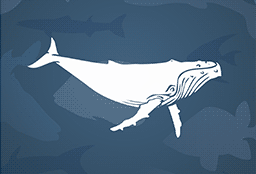Rhizophora apiculata
Mangroves are associated with wet, muddy and silty sediment. This species of mangrove has both aerial prop roots and stilt root which are designed to resist large waves and tropical storms. They are used to stabilise soil, to protect the coastline from storms, and to provide habitat for marine species. They also improve the water quality in nearshore environments. Parts of the plant can be used for traditional medicines and mangrove forests can be used as a sanctuary during cyclones. Natongtong grows up to 40 m in height, though it commonly reaches 5 to 8 m. The bark is grey to dark grey and heavily fissured, although it can occasionally be red-brown and smooth.
Leaves
Leaves are light or dark green, opposite, simple, egg-shaped and leathery with a distinct sharp pointed tip that is 1 to 7 mm long. The upper leaf is smooth and shiny. Mature leaves are 6 to 19 cm long and 3 to 10 cm wide. The leaf stalks are reddish.
Flowers
The flower clusters have few to many joint and one to many buds per cluster. The sepals of the flower, that encloses the petals and protects the flower bud, are typically pale yellow at maturity. The flower buds are egg-shaped, changing from green (immature) to pale yellowish green (mature). Buds are 1 to 2 cm long and 1 cm wide. There are generally four petals that are pointed at both ends to linear, with a creamy white colour, and are 10 mm long and 2 mm wide. Petals are arranged in a cross-shaped pattern. The stamens are pale yellow.
Fruit
At maturity, the fruit are pear-shaped, elongate, with a smooth brown surface. The smaller end points down. Mature fruit are located in leaf axils 8 nodes down from the apical (end of leaf distant from the branch) shoot. Seeds are hidden in the mature fruit. One to occasionally two seedlings are produced from the fruit, emerging from the smaller end while the fruit is still attached to the parent plant.
Spondias dulcis
Naus is native to the Indo-Malayan region to Tahiti, including Vanuatu. It is a medium sized tree, 10 to 15 m in height, with a straight smooth grey trunk and four to eight small buttresses. The crown of the tree is rounded. In Vanuatu, there is greater variability between forms of this species than anywhere else, and villagers distinguish between different types of this species according to the size, colour and taste of its fruits. Naus loses its leaves during the dry season.
Leaves
The elliptical shaped leaves are 4 to 14 cm in length and 2.5 to 5 cm in width and finely toothed towards the apex. They are a glossy dark green in colour, becoming yellow before falling.
Flowers
The flowers are grouped in loose clusters and are 50 cm long with very small white petals. They are fairly inconspicuous.
Fruit
The fruit is green, yellow, or orange when ripe. It is spherical or egg shaped with a length of 6 to 12 cm and a width of 4.5 to 9 cm. The fruit are found in bunches of 12 or more on a long stalk. The pulp is juicy and yellow or orange, often with fibres that are sometimes arranged in a loose and indistinct matrix. The fruit falls to the ground when green and hard before ripening. Villagers distinguish between several sorts of this species according to the colour and size of the fruit and its taste.
Barringtonia edulis
The Naval is endemic to the Solomon Islands, Vanuatu and Papua New Guinea. It is a medium sized tree with a vigorous framework of branches. It typically grows to 8 to 10 m but can grow up to 24 m in height. Most trees have a clear trunk up to one fifth of the tree height which is greyish-brown in colour. It has an extensive framework of branches that have regular fork following the formation of terminal flower clusters. The ‘flowers’ are part of a long hanging spike with over 100 densely packed flower buds, arranged in a spiral pattern. Almost every part of the plant has a traditional use.
Leaves
Leaves are large, simple, lanceolate (pointed at both ends) and are arranged clusters at the ends of the branches. The leaf size varies but is typically 21 to 66 cm long and 5 to 25 cm wide. The upper surface is a glossy dark green and the lower surface is slightly paler. The margins are undulated. Leaf veins are prominent and have a pattern of interlacing lines forming a net or web.
Flowers
A 30 to 110 cm long dangling spike contains up to 150 densely packed flower buds, arranged in spirally alternate pattern. The flowers varying in colour from green to white or red.
Fruit
The fruits are berry-like with short dense hairs. They are elongated, oblong to egg-shaped that taper towards the apex and base. They start as greyish-green and become reddish or purplish as they ripen. The typical length of a mature fruit is 25 – 99 mm. Fruits in Vanuatu are longer and more cylindrical than those in the Solomon Islands.
Saccharum edule
Naviso originates from the tropical climates of south-eastern Asia and is grown in various Pacific Islands, including Vanuatu. Naviso is a species of sugarcane. This grass has a fibrous stalk that is rich in sugar. It is perennial, meaning it lives for several years. It grows in vigorous clumps with three to four stalks. The stalks grow to 1.5 to 4 m in height and are often streaked with different colours, depending on the variety.
Leaves
The leaves are pale green and are slightly hairy and rough.
Flowers
The large flower clusters do not open. Instead, they remain enclosed in their leaf sheaths, creating a dense mass that is similar in size to a banana.
Fruits/seeds
This species does not produce seeds. It reproduces using suckers that generate into new plants.
Its species name banksii is after the English naturalist and botanist Sir Joseph Banks.
A small, brown seaweed (algae) which resembles a beaded necklace. It has branches (thalli) which are made up of strings of hollow, water-filled, round or oval-shaped beads joined together by a short stalk. Each bead is covered in many pores, giving it a rough surface. It is attached to the substrate by a thin disc (holdfast).
Size
Fronds 10 – 30 cm long, beads 5 – 15 mm in diameter, and holdfast 3 – 10 mm across.
Situated on beautiful Phillip Island, Newhaven College provides education from Prep to Year 12. This unique 82 acre site is bursting with wildlife and a prime location for a Climate Watch Trail.
The grounds also include a Climate Watch Cultural Trail experience which celebrates Bunurong stories and nature. From bushfire recovery and resilience, to wisdom about the Moonah tree, powerful narrations from Bunurong Elders enable visitors to understand the importance of country in a new light.
Newhaven College has created an education program for younger year levels, demonstrating to others in the school how to monitor and observe species. The cultural trail provides an avenue for outdoor classrooms for both environmental and cultural studies.
They have also created an education program for younger year levels, demonstrating to others in the school how to monitor and observe species.
Flowering orchid up to 30 cm tall.
This orchid is pollinated by a species of fungus gnat, attracted to the flower by a chemical produced by the plant. The insect enters the flower, which temporarily traps it inside, and in attempting to escape, it comes into contact with the sexual organs of the flower and pollination occurs.
Leaves
Egg-shaped to elliptic dark-green leaves in rosette arrangement at the base of the stem, 3 – 9 cm long, 1 – 3 cm wide. Leaf margins wavy or crisped.
Flowers
Single flower ‘hood’ emerging on a flowering spike 8 - 30 cm tall. Flowers are 1.8 – 2.5 cm long, showing a strong ‘nodding’ position; and are a translucent white colour, with green stripes and orange/brown colouration at the tips.
Fast growing medium-sized tree, 16 - 30 m tall that forms dense foliage cover. It is particularly drought resistant, and tolerates poor soil conditions.
Leaves
Long, slightly curved leaves 10 - 20 cm long.
Flowers
Grouped yellow flowers in a spike, up to 8 cm long, develop from February to August.
A ClimateWatch Trail has been established at Ben's Walk, Nowra Showgrounds.
Its genus name Ceratopetalum means horned-petal after one of the species that has petals resembling stag’s horns, and its species name gummiferum means gum-bearing after the gum that oozes out of its bark.
Evergreen shrub or small tree, up to 10 m high and 6 m wide, but much smaller when grown in gardens where it reaches a height of only 2 – 5 m.
Leaves
Glossy green and made up of three leaflets which are 3 – 8 cm long and 0.5 – 3 cm wide when mature. They are thin, with serrated edges, and are a golden orange-red colour when young.
Flowers
Initially creamy white and star-shaped, forming clusters that are 10 cm long. Each flower has five petals that are about 3 mm long. After pollination the white petals fall off, leaving the outer sepals which enlarge to about 12 mm long and turn deep pink to orange-red. These “flowers” consist of five sepals and are also star-shaped. They are commonly mistaken for flowers, but the real flowers are the less noticeable white ones.
The Oblong turtle (Chelodina oblonga) occurs in Northern WA and the Northern Territory. This species is also known as Southwestern snaked-neck turtle (Chelodina colliei) in southwest Western Australia.
The original specimen collected and given the name Chelodina oblonga is now thought to be from a species of long necked turtle found in northern WA and the Northern Territory, the Northern Long-necked turtle (Macrochelodina rugosa). The first specimen of the oblong turtle seen in southwest WA was originally classified as Chelodina colliei.
The carapace (upper shell) ranges in color from light brown to black. The olive to gray neck is thick, with blunt rounded tubercles. The head is large and flat with a protruding snout and an unnotched upper jaw.
Size
Adult Shell 30 - 40 cm long.
A medium sized bird with Orange legs and feet. Brown upper wing, head and neck. May have a blue tinted neck. It has a small downwards pointed tail with an orange/yellow beak.
It builds a mound for a nest made of a large heap of mostly decomposing organic matter (leaves, earth, sticks, debris, sand etc) that are circular or elongated.
Distinctive feature
A black crest on the top of the head.
Mostly black in colour with a light grey saddle behind the dorsal fin and a distinct white oval shaped horizontal patch behind the eye. The belly, underside of the jaw, and underside of the tail are also white. Mature males have a tall triangular-shaped dorsal fin while females and juveniles have a smaller, more curved dorsal fin.
Size
Adults reach a length of 10 m, dorsal fin up to 1.8 m in height.
The caterpillar (larva) is initially green, white and brown and resembles bird droppings. A mature caterpillar has a dark brown head, a green body with some pale yellow and brown markings, and spines along its back.
The male butterfly (adult) is black with an arc of creamy-white spots near the tip of each forewing. Each hindwing has a creamy-white patch and a single red spot, and there are many red crescents on its underside.
The female butterfly is brown to black, and the outer half of its forewing is whitish-grey. Its hindwing has a creamy-white patch, as well as a series of blue and red crescent-shaped markings.
Size
Caterpillar up to 6 cm long; Butterflies 10 – 12 cm wingspan.
Known best for its unique geological rock formations, Organ Pipes National Park is home to a wide variety of plants and animals across three distinct communities, found along the river, on the slopes and on the top of the escarpment. Over 150 years of grazing and farming had left the land barren and eroded before the park was protected in 1972. Since then revegetation efforts have enabled the return of many native species.
ClimateWatch was developed with guidance and support from researchers, scientists and technology experts. This page outlines the current governance structure of ClimateWatch and provides more information on those involved in the program.
Steering Committee
Formed to oversee the delivery and development of ClimateWatch objectives and provide scientific and strategic advice.
 Dr Linda Beaumont
Dr Linda Beaumont
Linda is a research scientist and lecturer at Macquarie University’s School of Biological Sciences. Her research focusses on the biological impacts of climate change. Much of Linda’s work involves the use of environmental models to assess potential future changes to species distributions. She is also a member of the Earthwatch Scientific Advisory Committee.
 Professor David Booth
Professor David Booth
David is Professor of Marine Ecology at the University of Technology Sydney and Chair of the Scientific Advisory Committee of the Sydney Institute of Marine Science. He has research interests in reef fish ecology, climate change and other anthropogenic impacts on fishes and fisheries. David is also on the Earthwatch Scientific Advisory Committee.
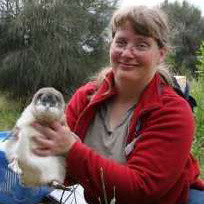 Dr Lynda Chambers
Dr Lynda Chambers
Lynda is a zoologist and climatologist based at the Centre for Australian Weather and Climate Research (Australian Bureau of Meteorology). She specialises in climate impact and adaptation research, in particular its interface with Australian flora and fauna. Lynda has been involved with ClimateWatch since its inception.
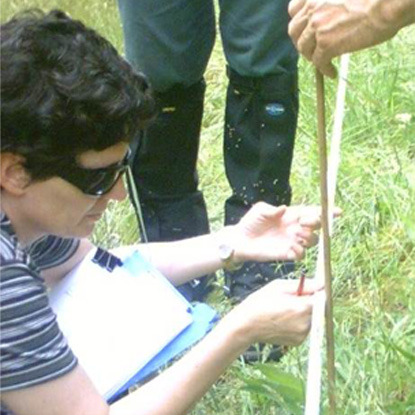 Dr Marie Keatley
Dr Marie Keatley
Marie is a plant ecologist at Parks Victoria and The University of Melbourne whose research focuses on phenology. This means she studies the different life stages of plants, such as flowering and fruiting, to understand how these stages influence one another as well as how climate and other factors influence them. Marie is also one of the founders of ClimateWatch.
ClimateWatch Species Advisors
The role of the ClimateWatch Species Advisors is to provide guidance to ClimateWatch on the selection of indicator species, develop the species information available online, and review ClimateWatch data relevant to their species group. The current species advisors are:
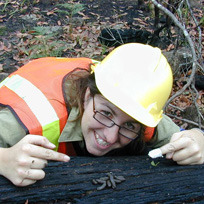 Dr Lisa Cawthen | Mammals
Dr Lisa Cawthen | Mammals
Lisa is a wildlife ecologist working in Tasmania as a researcher, community educator and consultant. Lisa has worked on a range of environmental project but her main research focus has been improving how we manage our forests for wildlife. She recently completed her PhD at the University of Tasmania, researching bats in an effort to conserve them and their habitat.
 Dr Lynda Chambers | Birds
Dr Lynda Chambers | Birds
See above for bio
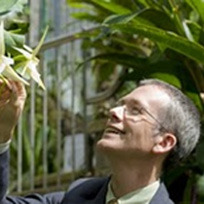 Dr Tim Entwisle | Plants
Dr Tim Entwisle | Plants
Tim is the Director and Chief Executive, Royal Botanic Gardens Melbourne and Cranbourne. He is a scientist and scientific communicator with a broad interest in plants, science and gardens. Tim’s research interest is freshwater algae: since 1984, he has described dozens of new species, two new genera and a new family of algae.
 Dr Volker Framenau | Spiders
Dr Volker Framenau | Spiders
Volker is one of Australia’s leading arachnologists and has significant research experience in the taxonomy and systematics, population biology and behavioural ecology of spiders and other arachnids. Volker is a Director of Phoenix Environmental Sciences, a Western Australian environmental consulting company that conducts biological surveys for mining and infrastructure projects.
 Dr Lisa Gershwin | Jellies and Drifters
Dr Lisa Gershwin | Jellies and Drifters
Lisa is marine biologist in Tasmania and the Director of the Australian Marine Stinger Advisory Services. She has over 18 years of experience in jellyfish research, and has discovered more than 160 new species. Her recent research has focussed on forecasting the deadly irukandji bloom in tropical Australia. Lisa is also a passionate science writer and communicator.
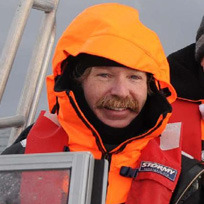 Dr Curt Jenner | Whales
Dr Curt Jenner | Whales
Curt is the Managing Director and Principal Investigator at the Centre for Whale Research, Western Australia. His interests include population biology of humpback whales and blue whales, their migratory pathways, and the relationship of these pathways to oceanographic features. As a Master Mariner, his strong sailing background has been very useful in these pursuits.
 Dr Marie Keatley | Plants
Dr Marie Keatley | Plants
See above for bio
 Dr Anthony Richardson | Jellies and Drifters
Dr Anthony Richardson | Jellies and Drifters
Anthony is marine researcher at CSIRO and a Senior Lecturer at The University of Queensland. He has diverse research interests in marine ecology, climate impacts research and analysis of large datasets using modern data analysis techniques. Anthony’s current research focusses on the effects of environmental variability on marine systems to predict impacts of climate change.
 Dr David Schoeman | Beach Invertebrates
Dr David Schoeman | Beach Invertebrates
Dave is a marine biologist at the University of the Sunshine Coast who researches how marine critters respond to climate change. His research focusses on identifying and quantifying ecological consequences of climate change at scales from the very local to global, and on designing strategies to minimise the loss of ecosystem services.
 Associate Professor Steve Smith | Rocky Shore Marine
Associate Professor Steve Smith | Rocky Shore Marine
Steve is a marine benthic ecologist based at Southern Cross University’s National Marine Science Centre. He specialises in measuring and monitoring the biodiversity of subtropical marine and estuarine habitats. Steve is particularly interested in molluscs, and how these animals respond to natural and human-induced changes to their environment.
 Dr Reid Tingley | Reptiles and Amphibians
Dr Reid Tingley | Reptiles and Amphibians
Reid is a Research Fellow in the ARC Centre of Excellence for Environmental Decisions (CEED) at The University of Melbourne. Reid’s research combines field work with lab experiments and statistical modelling to understand how species traits and human activities influence the processes of invasion and extinction in amphibians and reptiles.
Previous Advisors
Science Advisory Panel (SAP)
David Cantrill (Royal Botanic Gardens Melbourne), Andy Donnelly (Earthwatch), Ian Endersby (Australian Entomology Society), Sue Jenkins (ACF), Andy Lowe (University of Adelaide), James O'Connor (BirdLife Australia), Brett Summerell (Royal Botanic Gardens Sydney), Stephen Williams (James Cook University), Dr Elvira Poloczanska (CSIRO).
Western Australian Science Advisory Panel
Kingsley Dixon (Botanic Gardens and Parks Authority), Rich Weatherill (Earthwatch Australia), Nic Dunlop (Conservation Council WA), Lynda Chambers (Bureau of Meterology Melbourne), Volker Fremenau (WA Museum), Colin Yates (Department of Environment and Conservation), Will Stock (Edith Cowan University), Leonie Valentine (Murdoch University), Kevin Thiele (WA Herbarium), Nicola Mitchell (University of Western Australia), Grant Wardell-Johnson (Curtin University).
Technological Advisory Panel
Paul Flemons (Australian Museum), Donald Hobern (CSIRO, Atlas of Living Australia), Piers Higgs (Gaia Resources), Bill Wright (Bureau of Meteorology), Lynda Chambers (Bureau of Meteorology), Russ Weakley (Max Design), Peter Houghton (Earthwatch), Andy Donnelly (Earthwatch), Chris Gillies (Earthwatch).
Community Engagement Panel
Faycal Benabdellaziz (NAB), Lucy Broad (ABC – Climate Sustainability Project), John Eather (KPMG), Tim Entwisle (Royal Botanic Gardens Melbourne), Mark Forstmann (Totem Films), Nick Lee (ABC – Catalyst), Simon Stroud (Dept of Environment and Climate Change, Parks and Wildlife Group), Andy Donnelly (Earthwatch), Sara Davis (Earthwatch), Rachel Maitland (Earthwatch).
Annual herb or perennial sub-shrub up to 20 cm tall, often forms a mat up to 2 m in diameter. Pale four-petalled yellow flowers.
Leaves
Distinctive leaves made up of two fleshy Y-shaped leaflets looking like butterfly wings. Leaves are ovate with a narrow end at their base. Leaves grow between 1 - 4 cm long and are fleshy, a dull grey-green or green.
Flowers
Bright yellow in colour with four petals growing between 8 - 15 mm.
Palola viridis
Palolo are found in tropical regions of Asia and the Pacific, including Vanuatu. Palolo are a type of segmented marine worm that grow up to 40 cm in length. Each segment of their bodies has paddlelike appendages with gills. The head of the worm has many sensory tentacles. Males are reddish-brown and females are bluish-green. They live in crevices and coral rubble.
Size
Up to 40 cm in length.
Breeding
During the breeding season, the worm breaks in half with the tail section carrying the eggs or sperm to the ocean surface. The tail section looks like an animal and has eyes and drifts on the waves in large, tangled masses of thousands of worms. The head section remains in the reef. Breeding occurs at least twice per year, at almost the same time annually and following a phase of the moon. There is a strong link between El Niño and the quantity of palolo. Strong El Niño tend to result in very low palolo harvests. More palolo seem to spawn in years of neutral El Niño.
Diet
Palolo are omnivores feeding on both invertebrate and algal material. They are also scavenger feeders.
Pannawonica is an iron-ore mining town located in the Pilbara region of Western Australia, near the Robe River.
Paraburdoo is a mining town which is located at the south western end of the Hamersley Range National Park in the Pilbara region.
Pencil pine is slow-growing; it can take more than 50 years to reach 1 m tall, but it can live for 1300 years, placing this species amongst the longest lived trees in the world.
A conifer tree usually with a classic conical shape. Grows up to 15 m tall, smaller in exposed environments. Older trees often have multiple trunks and some dead branches.
Leaves
Individual leaves mid to dark green, small (3-5 mm long) and scale-like, closely clasped to stems. Leaves densely arranged around stems, forming a rope-like branchlet less than 5 mm in diameter.
Cones
Male and female cones usually on separate branches, at the tips of the stems. Male cones small (4 - 5 mm diameter), develop between February and May, persist until spring. Female cones 12 - 15 mm diameter, develop between September and February, cones can persist for several months after seed shed in autumn. Gold in colour, becoming reddish-brown with age.
Large quantities of cones are produced during ‘mast’ years, typically every 5 - 6 years, with much less fruiting in other years.
Changes in the timing of important life-cycle stages of plants and animals, such as flowering, breeding and migration, have provided some of the strongest evidence of climate change impacts on our natural and managed systems. These changes have the potential to disrupt predator-prey relationships and impact on food webs by changing the competition between species. Understanding how individual species and ecosystems will respond to future changes is important for effective planning in natural resource management and agricultural production.
Although we anticipate that species may not respond in similar ways across the globe it is only recently that we have been able to look for consistent patterns amongst southern hemisphere species and regions. For example, a recent study found that overall spring life-cycle stages are starting earlier. However, there were differences between species: for example marine species were more likely to commence breeding earlier than in terrestrial ones, and flowering in plants more so than breeding in birds. One of the strongest signals came from Australian grape vines, with varieties in many regions now reaching maturity, or ready for harvest, much earlier than previously.
At present, we only know a little about how changes seen in single species might impact on the relationship between species and the ecosystem as a whole. This is because, according to the authors of the study, there are large gaps in the information available on the patterns of life-stages of plants and animals in many regions and, as a consequence, there is an urgent need to fill these data gaps. ClimateWatch was cited as an example as one of the ways of filling the gaps.
To read the full article about changes in the Southern hemisphere, click here.
Black and white, with the pattern varying across its range. The back of its neck, upper tail and shoulders (on its wings) are white in males and grey in females, and (across most of Australia) the rest of its body is black. In south-eastern, central and south-western Australia, including Tasmania, its back and rump are entirely white. Its eye is red-brown. Young birds are usually grey rather than black and have dark eyes.
Distinctive feature
One toe faces backwards and three face forwards. It has a square-tipped tail.

